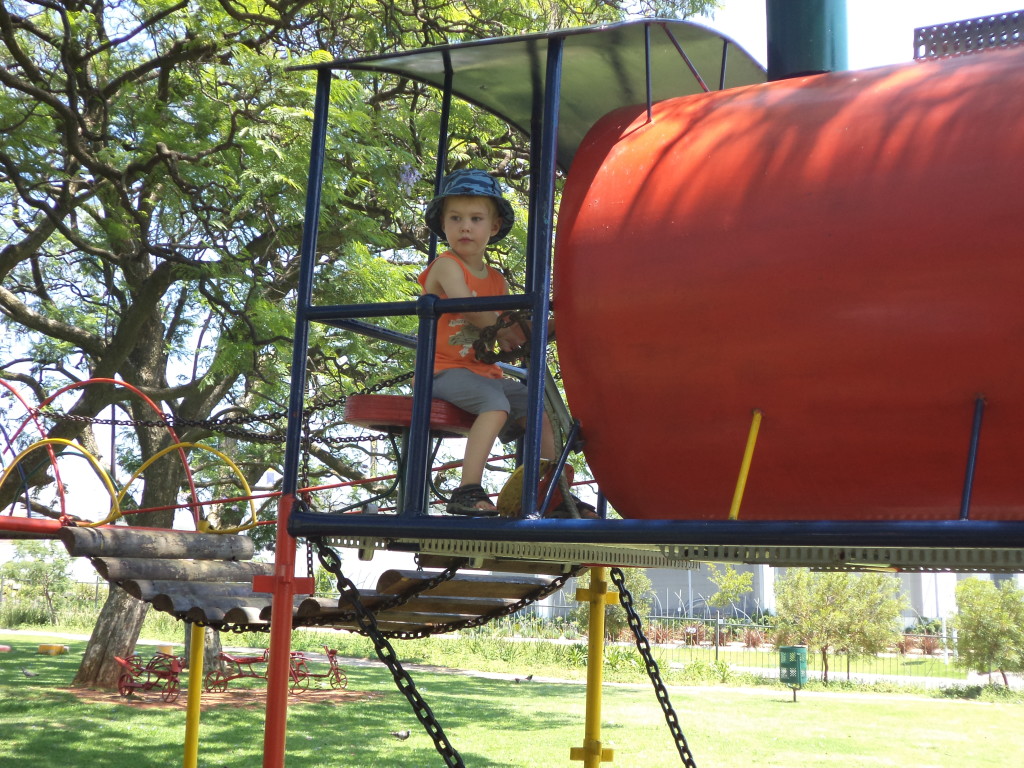- You are here:
- Home »
- Blog »
- Places to see »
- The Kruger National Park

The Kruger National Park
South Africa has dedicated more than three million hectares of its total land mass to the conservation of its natural heritage. You will see a great variety of habitats and wildlife when you visit these amazing sites.
The Kruger National Park covers around 2 million hectares and is the largest game reserve in South Africa. It is roughly the same size and shape as either Israel or Wales! It covers 20 000 square kilometres and it stretches 350 km from north to south and 60 km from east to west. To the north of the Park is Zimbabwe and to the east is Mozambique. The Kruger National Park will be extended into the Great Limpopo Transfrontier Park by taking some fences down between the Gonarezhou National Park in Zimbabwe and the Limpopo National Park in Mozambique. This will then cover more than 36 000 square kilometres and will be larger than Switzerland.
In 1896 the rinderpest virus wiped out most of the region’s game and cattle, leaving the area crippled. Hunters decimated the originally rich game stock between the Crocodile River in the south, Sabie River in the north, Lebombo Mountains in the east and the Drakensberg in the west. Therefor President Paul Kruger opened the National Park to protect and ensure the survival of the remaining animals. Funds for the Sabie Game Reserve were allocated in 1898, but then war broke out.
After the second Boer War, James Stevenson-Hamilton, a Scottish born individual, was appointed the first warden in 1902 and a few months later the area from the Sabi River all the way to the Olifants River was added. He removed all human inhabitants from the reserve and began to shoot all predators in order to protect the antelope herds. By 1905, the Sabi Game Reserve had expanded to include more than 17 000 kilometres.
In 1926 the reserve was named after President Paul Kruger and was declared South Africa’s first National Park. In 1927 the park was opened to the public and they were charged a £1 entry fee. Only a few people came to visit the park during that year, but by 1935 more than 26 000 people passed through the gates.
Today more than 1 million people per year visit this magnificent park. Stevenson-Hamilton was very surprised when lions became one of the biggest attractions and he stopped the shooting of predators. The extended Kruger Park was only fenced in for the first time in 1962. On the 31st of May 1972, the Sabie and Shingwedzi reserves together with 70 privately owned farms were consolidated into the Kruger National Park, one of the greatest parks in the whole of Africa.
Altogether there is about 1 982 species of plants, 517 species of birds of which 253 are residents and many other animals. Some of them are the African buffalo, African hunting dogs, cheetahs, eland, bushbucks, zebra, black rhinoceros, white rhinoceros, giraffes, kudus, hippopotamus, leopards, lions, impalas, mountain redbucks, nyalas, redbucks, antelopes, sable antelopes, hyenas, elephants, warthogs, waterbucks, wildebeest, baboons, monkeys, duiker, steenbok and klipspringer.
There are also 120 species of reptile including the Nile crocodile, 52 species of fish and 35 species of amphibians. The best time for observing all these animals is the dry winter season (during the months of April to September). The Kruger National Park is a summer rainfall area and during the winter months, the grass is low and bushes don’t have leaves, so you will have an unobstructed view.
It virtually does not rain during the winter months which forces the animals to come to the water holes and six rivers that feed this magnificent Park to drink in the mornings and evening. The animals can easily be watched from the comfort of your car. During the summer months the rain transforms the earth into a lush green haven, a flowering paradise and watching birds during this time is excellent.
There are also 130 recorded rock art sites in the park you can go and see while you spot the animals on the way. Make sure to take your malaria tablets though before you visit the Kruger National Park. This is malaria area although it isn’t as dominant as in earlier years. Take the necessary precautions by taking tablets, wearing light long sleeved clothing and also protect your ankle area. Read more about malaria before travelling to any malaria destination.
About the Author Lizel Salter
I was born in Vanderbijlpark, South Africa and grew up in Vereeniging. The first time I left home was in 2002 to go to England on a working holiday. Met my husband halfway around the world, got married in South Africa and now have 2 beautiful children. One boy and one girl... Started writing down recipes I grew up with when I was living in England and love sharing them with others. Buy my downloadable book and keep all the recipes together! https://recipesfromsouthafrica.com/download-book-in-english/
